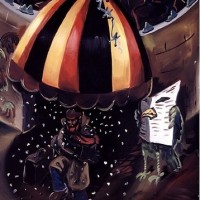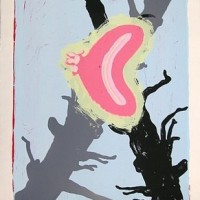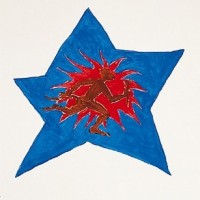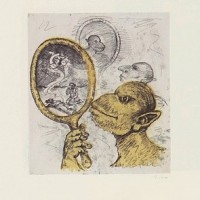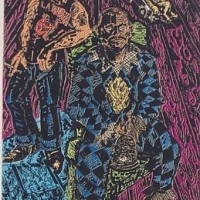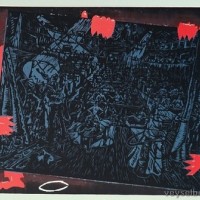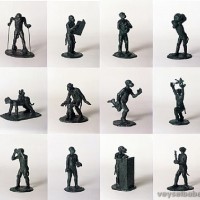- Home
- ABOUT US
- ABOUT VEYSEL BABA
- REDFOX ART HOUSE VIRTUAL TOUR
- MY LAST WILL TESTAMENT
- NOTES ON HUMANITY AND LIFE
- HUMAN BEING IS LIKE A PUZZLE WITH CONTRADICTIONS
- I HAVE A WISH ON BEHALF OF THE HUMANITY
- WE ARE VERY EXHAUSTED AS THE DOOMSDAY IS CLOSER
- NO ROAD IS LONG WITH GOOD COMPANY
- THE ROAD TO A FRIENDS HOUSE IS NEVER LONG
- MY DREAMS 1
- MY DREAMS 2
- GOLDEN WORDS ABOUT POLITICS
- GOLDEN WORDS ABOUT LOVE
- GOLDEN WORDS ABOUT LIFE
- GOLDEN WORDS ABOUT DEATH
- VEYSEL BABA ART WORKS
- SHOREDITCH PARK STORIES
- EXAMPLE LIVES
- ART GALLERY
- BOOK GALLERY
- MUSIC GALLERY
- MOVIE GALLERY
- Featured Article
- Home
- ART GALLERY
- Jörg Immendorff
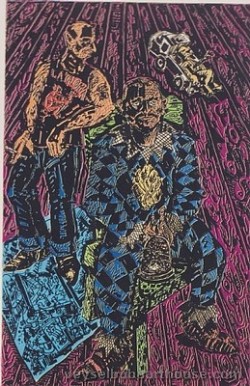
Jörg Immendorff
Jörg Immendorff (June 14, 1945 – May 28, 2007) was one of the best known contemporary German painters; he was also a sculptor, stage designer and art professor.[1]

Early life and education
Immendorff was born in Bleckede, Lower Saxony. When he was 11 years old, his father left the family. This traumatic experience has been used to explain Immendorff's later feelings of inadequacy and emotional remoteness.[2] He attended the boarding School Ernst-Kalkuhl Gymnasium as a student.
From 1963, Immendorff studied at the Art Academy in Düsseldorf (Kunstakademie Düsseldorf). In the beginning, he studied for three terms with the theater designer Teo Otto.[3]After Otto threw him out of his class for refusing to let one of his paintings serve as stage-set decoration, Immendorff was accepted as a student by Joseph Beuys. The academy expelled him because of some of his (left-wing) political activities and neo-dadaist actions. From 1969 to 1980, he worked as an art teacher at a public school, and then as a free artist, holding visiting professorships all over Europe. In 1989, he became professor at the Städelschule in Frankfurt am Main and in 1996 he became professor at the Art Academy in Düsseldorf — the same school that had dismissed him as a student.
Work



Immendorff's paintings are sometimes reminiscent of surrealism and often use irony and heavy symbolism to convey political ideas. He named one of his first acclaimed works "Hört auf zu malen!" ("Stop painting!")[4]
Immendorff was a member of the German art movement Neue Wilde. In January 1968 he appeared in front of the West German Parliament in Bonn[5] with a wood block labeled “Lidl” tethered to his ankle and painted in the colors of the German flag; he was subsequently arrested for defaming the flag.[3] Best known is his Cafe Deutschland series of sixteen large paintings (1977–1984) that were inspired by Renato Guttuso’s Caffè Greco; in these crowded colorful pictures, Immendorff had disco-goers symbolize the conflict between East and West Germany. Since the 1970s, he worked closely with the painter A. R. Penck from Dresden (in East Germany).
Immedorff created several stage designs, including two for the Salzburg Festival. He designed sets for the operas Elektra and The Rake's Progress. The latter also inspired a series of paintings in which he cast himself as the rake.[3]
In 1984, he opened the bar La Paloma near the Reeperbahn in Hamburg St. Pauli and created a large bronze sculpture of Hans Albers there. He also contributed to the design of André Heller's avant-garde amusement park "Luna, Luna" in 1987. Immendorff created various sculptures; one spectacular example is a 25 m tall iron sculpture in the form of an oak tree trunk, erected in Riesa in 1999.
In 1997, he won the best endowed art prize in the world, the MARCO prize of the Museum of Contemporary Art in Monterrey, Mexico. In the following year he received the merit medal (Bundesverdienstkreuz) of the Federal Republic of Germany. He was a friend and the favorite painter of former German Chancellor Gerhard Schröder, who chose Immendorff to paint the official portrait of Schröder for the Bundeskanzlerleramt. The portrait, which was completed by Immendorff's assistants, was revealed to the public in January 2007; the massive work has ironic character, showing the former Chancellor in stern heroic pose, in the colors of the German flag, painted in the style of an icon, surrounded by little monkeys.[6] These "painter monkeys" were a recurring theme in Immendorff's work, serving as an ironic commentary on the artist's business.

In 2006, he selected 25 of his paintings for an illustrated bible. In the foreword he described his belief in God.[7]
Personal life
Immendorf skillfully used the media for self-promotion. In 2000, his wedding to his Bulgarian former student Oda Jaune more than 30 years his junior became a public event. The two had daughter, Ida, who was born on August 13, 2001.
Drug scandal
In August 2003, Jörg Immendorff was caught in the luxury suite of a Düsseldorf hotel with seven prostitutes (and four more on their way) and some cocaine. More cocaine was found in his studio; all in all, the found substances contained 6.6 grams of pure cocaine, above the legal threshold for personal use. In interviews, he attempted to explain his actions with his terminal illness and as an expression of his "orientalism" that provided inspiration for his work. He also complained about prostitutes "who don't understand that a good whore does not divulge anything about her clients."[8] He cooperated with the prosecution, admitted to having taken cocaine since the early 1990s and supplied the name of his dealer. At the trial in July 2004, he admitted to having organized 27 similar orgies between February 2001 and August 2003. He was sentenced to 11 months on probation[3] and was fined €150,000. The mild sentence was justified with Immendorff's illness and his extensive confession. He had been suspended from his position at the university but was reinstated after the verdict.
In March 2004, a woman had attempted to blackmail Immendorff, threatening to divulge further details of the orgies. Immendorff notified the police and she was arrested. Her trial started in September 2004.
Disease and death
Immendorff was diagnosed with ALS (Lou Gehrig's disease) in 1998. When he could not paint with his left hand any more, he switched to the right. In 2004 he funded a stipend to research the disease.
In November 2005, he was treated by emergency physicians and was admitted to a hospital, where a tracheotomy had to be performed to help him breathe. As of 2006, he used a wheelchair full-time and did not paint anymore; instead he directed his assistants to paint following his instructions.
On May 27, 2007, at the age of 61, he succumbed to the disease.[4] He died in Düsseldorf and his ashes were scattered in the Mediterranean Sea. In his will, he left his entire estate, estimated at €15-18 million, to his wife. A 12-year-old son from a former relationship who never knew his father went to court over the size of his legitime.[2]
Art market
The market for Immendorff’s late works, in particular, is considered problematic. As his a neurodegenerative disease gradually made him unable to paint, he increasingly relied on his studio assistants to complete his works. There are doubts, however about his actual level of involvement.[9]
